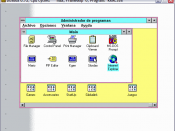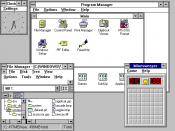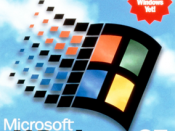Over the past two decades, Microsoft Windowsî products have evolved from a single, one-size-fits-all desktop operating system into a diverse family of operating systems and mobile technologies. Today, Windows products help people worldwide achieve their potential at work, home, and just about anyplace in between. It started when Microsoft was founded in1975. Since that time Microsoft has grown, as you will see. On November 10, 1983, Microsoft announced Microsoft Windowsî, an extension of the MS-DOSî operating system that would provide a graphical operating environment for PC users. With Windows, the graphical user interface (GUI) era at Microsoft had begun. In November 1985 Microsoft Windows 1.01 was released. In August of 1995 Windows 95 was released. Microsoft predicated that Windows 95 would quickly become the new standard operating system, replacing DOS, Windows 3.1 and Windows for Workgroups. As we can see it did just that! Windows 95 is set up to run 32-bit applications, of which there are already more than 1,000 on the market.
Just like the move from DOS to Windows systems prompted many software manufacturers to eventually discontinue production of DOS versions of their software, so will developers begin to create 32-bit Windows 95 software applications and phase out the research and money they put into developing 16-bit software. Then in June of 1998 Windows 98 was released. It turned out to be Windows 95 successor. Windows 98 improves performance, reliability and easy to use, as well as unlocking an exciting new range of PC hardware and entertainment capabilities. Then Finally in October 2001 Windows XP was created its main objective was for Business use, particularly for those on a network. It's also a superior platform for programmers, engineers, statisticians, high-end scientific users, and those requiring extensive security. It includes networking and other features that make...



Where's the sources?
You skipped windows 2000 and windows millennium. You clearly did some research but you don't have any sources. Fairly good essay though.
0 out of 0 people found this comment useful.